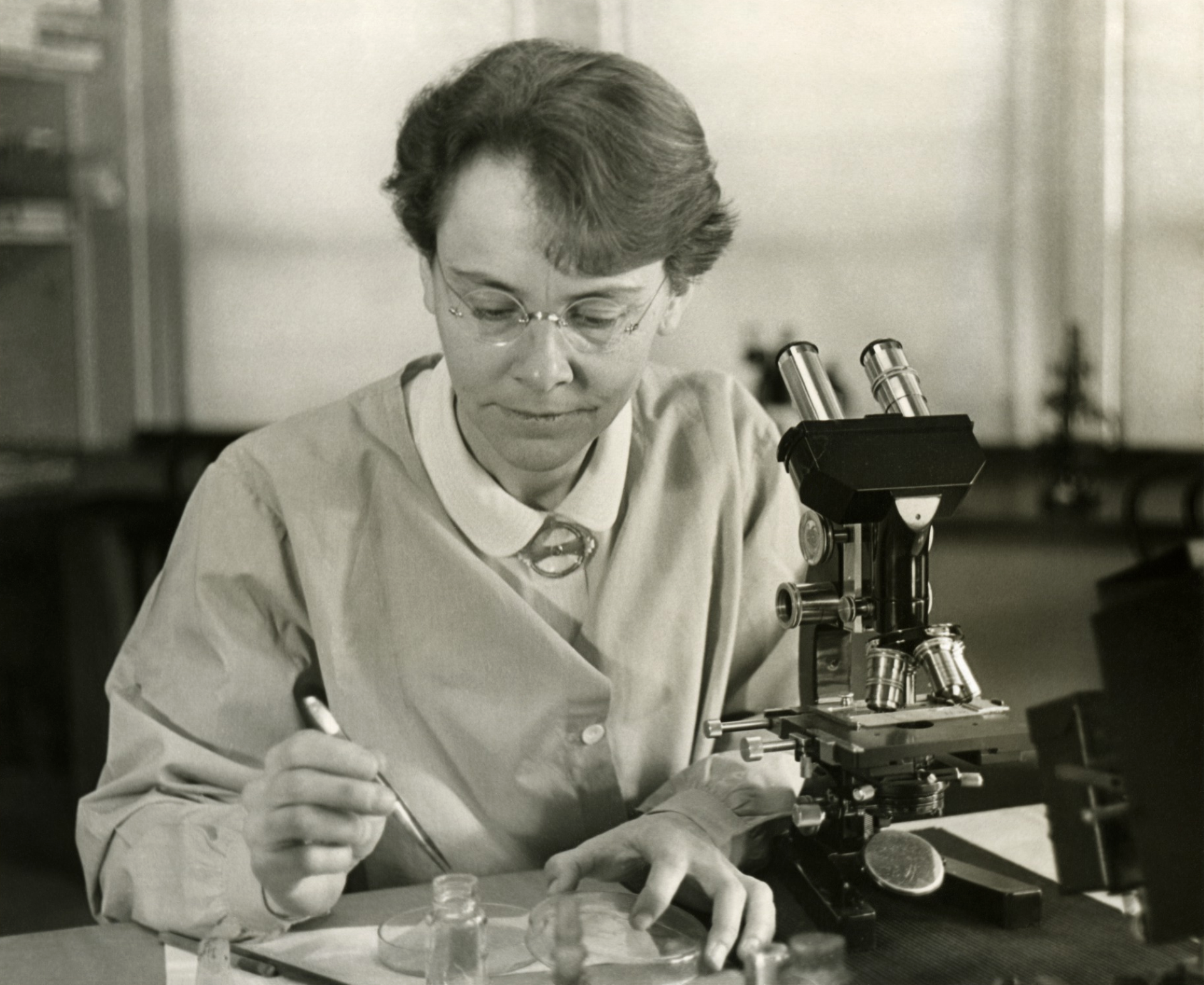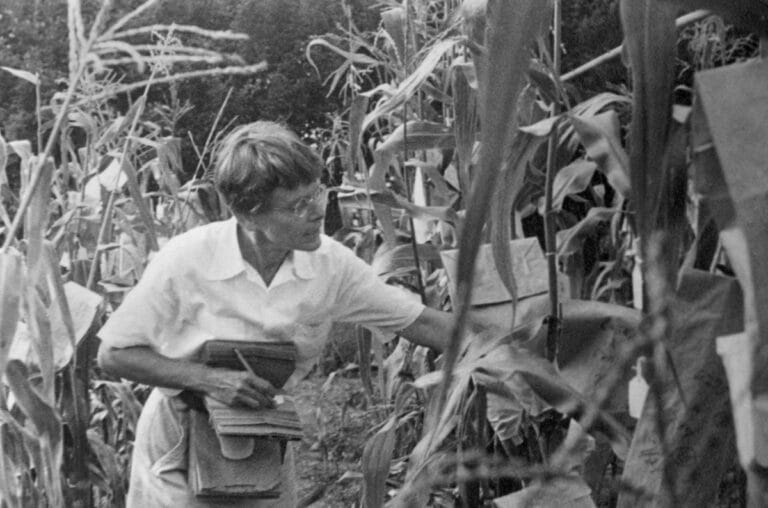Unsung heroes in science: Barbara McClintock

Barbara McClintock was a pioneering geneticist who discovered that genes can ‘jump’. This discovery led to her receiving the Nobel Prize in Physiology or Medicine in 1983.
Key terms
DNA
(deoxyribonucleic acid) A molecule that carries the genetic information necessary to build and maintain an organism.
Gene
A section of DNA within a genome that carries a specific set of information - often the information needed to make a protein.
Genome
The complete set of genetic instructions required to build and maintain an organism.
Early life
Born in 1902 in Connecticut, US, Barbara was known as an independent child who was happy to be by herself – traits that stayed with her into adulthood. She had a huge interest in science and was encouraged by her father to go to college, despite her mother’s fears that going to college would make young Barbara “unmarriageable”.
Barbara received her BSc degree in botany from Cornell’s College of Agriculture in 1923, and went on to receive her PhD in 1927, also in botany. After receiving her PhD, she remained at Cornell, continuing to study the genetics of maize.
Even in the earliest stages of her career, Barbara made important discoveries about how genes and chromosomes work. One of her pioneering early projects was to develop a stain that made it possible to see the chromosomes in maize. This helped with understanding how chromosomes behaved, including discovering that some chromosomes are always located near to each other, and why certain genes are usually inherited together. In 1931, Barbara and her student Harriet Creighton published a paper demonstrating that chromosomes can physically exchange segments of DNA.
As her reputation grew, Barbara worked in several different institutions, but had difficulty finding a permanent position as few places allowed women to be professors. She gained an assistant professorship at the University of Missouri in 1936 but it wasn’t until 1941 that she found a permanent position, at the Department of Genetics at the Carnegie Institution of Washington in Cold Spring Harbour.
It was while she was here that she first made the discovery that genes can jump.


Barbara discovered that genes can ‘jump’ between chromosomes, causing mutations that can affect the function of genes.
Jumping genes in maize
Genes are stretches of DNA that code for a specific product, found at particular locations within a chromosome. This genetic location is known as a locus, the plural being loci.
When studying the leaves of maize plants, Barbara noticed that some of the leaves had different colours and patterns. When she looked at the chromosomes in these leaves, she saw that certain loci in some chromosomes had switched positions. She also investigated maize kernels, which also showed different patterns of colours based on how the genes had been switched around in the chromosome.
Barbara discovered that this movement of genes could lead to mutations within the chromosome, and this could affect the function of the gene, including switching the gene on or off.
This process of gene jumping is known as ‘transposition’. Genes with the ability to jump are called ‘transposons’ or ‘transposable elements’. Scientists are still not entirely sure why transposition happens, although along with switching genes on and off, the process might help to drive reshuffling of the genome, perhaps creating more genetic diversity and so helping with evolution.

When Barbara presented the concept of transposition, she said she was met with “puzzlement, even hostility” from the scientific community.
A hostile reception
When Barbara first published and spoke about jumping genes in the early 1950s, she was met with “puzzlement, even hostility” from the scientific community. This was because her discovery didn’t fit with what was understood at the time about how genes work. At the time, people thought that if a gene was switched off it was a permanent, irreversible change – so Barbara’s idea that a gene that could be switched back on again was particularly controversial.
However, Barbara wasn’t fazed: “It didn’t bother me, I just knew I was right,” she said. “Anybody who had had that evidence thrown at them with such abandon couldn’t help but come to the conclusions I did about it.”
Recognition
Although people didn’t always agree with her on transposons, Barbara’s talent and extraordinary body of work did earn her some personal recognition at the time, including being elected to the National Academy of Sciences at the young age of 42.
Eventually, Barbara’s work on transposons began to receive more recognition as techniques to study genetics improved. Other scientists were able to confirm that not only did transposons exist, but they could be found in other organisms as well as maize – initially in bacteria and bacteriophage viruses and later in almost all organisms.
In fact, it’s now thought that almost half of the human genome is made up of transposons – one of the highest among mammals and second only to the opossum genome. The majority of these transposons have no impact on characteristics, often because the genome has mechanisms in place to ‘silence’ them.
Barbara received the Nobel Prize in Physiology or Medicine in 1983. In her Nobel Prize statement, she said, “it might seem unfair to reward a person for having so much pleasure, over the years, asking the maize plant to solve specific problems and then watching its responses.”
